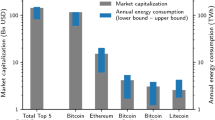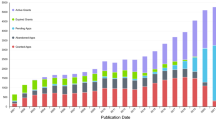Abstract
In this paper, we explore into the stochastic thermodynamics of a finite-tape information ratchet system. By determining the entropy production of the tape-ratchet system, we derive the information processing second law obeyed by the system. We found that the entropy production takes the form of the non-adiabatic component in both the transient and stationary regime, with the adiabatic component vanishes. The out-of-equilibrium stochastic behaviour is thus driven by non-adiabatic entropy production, with the occurrence of spontaneous relaxation from nonequilibrium initial state and the switching operation of the finite-tape information ratchet system. The observed nonequilibrium processes include (1) work extraction by assimilating excess heat from the heat reservoir when the information ratchet functions as an engine, or (2) dissipating work as excess heat into the heat reservoir when the information ratchet acts as a Landauer eraser. In particular, we observe the phenomenon of irreversible work conversion into excess heat as the information ratchet operates in the nonequilibrium stationary state.




Similar content being viewed by others
Availability of data
The datasets generated during and/or analysed during the current study are available from the corresponding author on reasonable request.
References
H. Leff, A. Rex, Maxwell’s Demon 2: Entropy, Classical and Quantum Information, Computing, 1st edn. (CRC Press, Boca Raton, FL, 2002)
K. Maruyama, F. Nori, V. Vedral, Rev. Mod. Phys. 81, 1 (2009)
R. Landauer, IBM, J. Res. Dev. 5, 183 (1961)
J.M. Horowitz, J.M.R. Parrondo, New J. Phys. 13, 123019 (2011)
T. Sagawa, M. Ueda, Phys. Rev. Lett. 104, 090602 (2010)
F.J. Cao, M. Feito, Phys. Rev. E 79, 041118 (2009)
D. Mandal, C. Jarzynski, Proc. Natl. Acad. Sci. USA 109, 11641 (2012)
A.B. Boyd, D. Mandal, J.P. Crutchfield, New J. Phys. 18, 023049 (2016)
S. Deffner, C. Jarzynski, Phys. Rev. X 3, 041003 (2013)
A.C. Barato, U. Seifert, Phys. Rev. E 90, 042150 (2014)
A.C. Barato, U. Seifert, Phys. Rev. Lett. 112, 090601 (2014)
L. He, A. Pradana, J.W. Cheong, L.Y. Chew, Phys. Rev. E 105, 054131 (2022)
B. Alberts, A. Johnson, J. Lewis, D. Morgan, M. Raff, Molecular Biology of the Cell, 6th edn. (Garland Science, New York, 2014)
M.D. Vidrighin, O. Dahlsten, M. Barbieri, M.S. Kim, V. Vedral, I.A. Walmsley, Phys. Rev. Lett 116, 050401 (2016)
L. He, J.W. Cheong, A. Pradana, L.Y. Chew, Phys. Rev. E 107, 024130 (2023)
C.V. den Broeck, Stochastic Thermodynamics: A Brief Introduction (IOS Press, Amsterdam, 2013), pp.155–193
M. Esposito, U. Harbola, S. Mukamel, Phys. Rev. E 76, 031132 (2007)
M. Esposito, C.V. den Broeck, Phys. Rev. E 82, 011143 (2010)
G. Manzano, J.M. Horowitz, J.M.R. Parrondo, Phys. Rev. X 8, 031037 (2018)
H. Ge, Phys. Rev. E 80, 021137 (2009)
K. Yoshimura, A. Kolchinsky, A. Dechant, S. Ito, Phys. Rev. Res. 5, 013017 (2023)
T. Hatano, S. Sasa, Phys. Rev. Lett 86, 3463 (2001)
M. Esposito, C.V. den Broeck, Europhys. Lett. 95, 40004 (2011)
J.M.R. Parrondo, J.M. Horowitz, T. Sagawa, Nat. Phys. 11, 131 (2015)
A. Kolchinsky, D.H. Wolpert, Phys. Rev. X 11, 041024 (2021)
H. Qian, Phys. Rev. E 63, 042103 (2001)
A.B. Boyd, D. Mandal, J.P. Crutchfield, Phys. Rev. X 8, 031036 (2018)
A.B. Boyd, D. Mandal, J.P. Crutchfield, Phys. Rev. E 95, 012152 (2017)
H. Ge, H. Qian, Phys. Rev. E 81, 051133 (2010)
M.T. Semaan, J.P. Crutchfield, Phys. Rev. E 107, 054132 (2023)
Author information
Authors and Affiliations
Contributions
LYC contributes to the conceptual design of the work. All authors contribute to the analysis and draft of the manuscript.
Corresponding author
Ethics declarations
Conflict of interest
The authors have no competing interests to declare that are relevant to the content of this article.
Appendix A mathematical proofs
Appendix A mathematical proofs
1.1 A.1 Positivity of the adiabatic and non-adiabatic entropy production
By using \(-\ln x \ge 1 - x\), we see that
where we have used \(\sum _i p_i = 1\) and \(\sum _{j} M_{ji} =1\). Similarly, we observe that
1.2 A.2 \(\Delta E = W = \Delta H + \Delta I\)
First, we note that
Because \(E_j - E_i = \ln \left( M_{ij}/M_{ji}\right)\) according to Eq. (8), we have
based on Eq. (10). Also,
where \(p^{\text {eq}}_i = e^{-E_i}/Z_0\) with \(Z_0= \sum _i e^{-E_i}\).
From Eq. (40), we have
where we have used Eqs. (12) and (A3). Thus, we have
Rights and permissions
Springer Nature or its licensor (e.g. a society or other partner) holds exclusive rights to this article under a publishing agreement with the author(s) or other rightsholder(s); author self-archiving of the accepted manuscript version of this article is solely governed by the terms of such publishing agreement and applicable law.
About this article
Cite this article
Chew, L.Y., Pradana, A., He, L. et al. Stochastic thermodynamics of finite-tape information ratchet. Eur. Phys. J. Spec. Top. (2023). https://doi.org/10.1140/epjs/s11734-023-00994-3
Received:
Accepted:
Published:
DOI: https://doi.org/10.1140/epjs/s11734-023-00994-3




